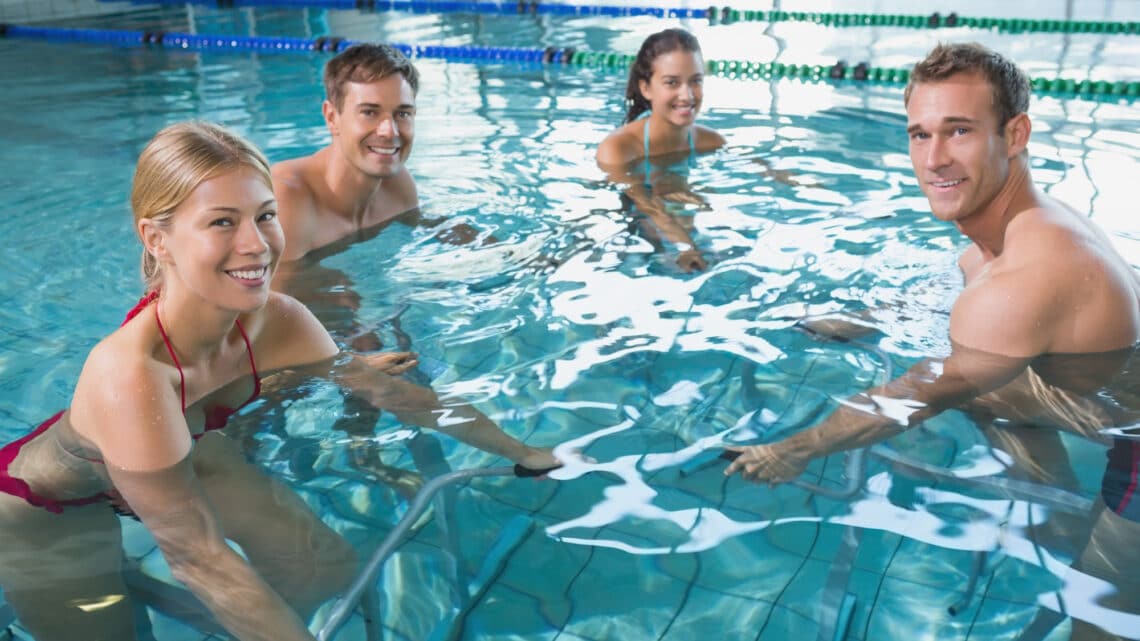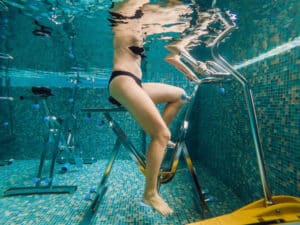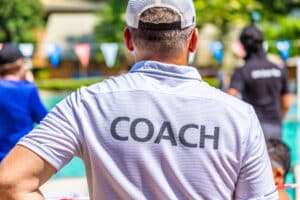
Dive into the world of aquatic fitness: Creating effective and attractive aquabiking courses
Welcome to the exciting world of aquatic fitness!
Before getting to the heart of the matter: create an aquabiking class. Let’s take a quick look!
If you’re looking for a unique and invigorating way to keep fit, aquabiking could be the answer.
Combining the benefits of cycling with the resistance of water, aquabiking offers a low-impact but highly effective workout that targets both your cardiovascular system and your muscles.
In this article, we’re going to delve into the art of creating effective and engaging aquabiking classes that will keep your customers coming back for more.
From designing a comprehensive training program to incorporating dynamic and engaging exercises, we’ll explore the key elements of a successful aquabiking class.
Whether you’re a fitness instructor looking to expand your repertoire or a fitness enthusiast keen to try something new, this guide will provide you with the tools and knowledge you need to make a splash in the world of aquatic fitness.
So grab your swimming costume and let’s get started on this exciting journey!
Note: download the detailed file on the 1o key points HERE
What is aquatic fitness and aquabiking?
Aquatic fitness is a form of exercise that takes place in water.
It offers many advantages over land-based activities, including increased resistance and reduced impact on the joints.
Aquabike involves pedaling in the water on a specially designed bike.

Aquabikes have pedals and straps to keep your feet in place, as well as resistance controls to increase or decrease the intensity of your workout.
This unique combination of cycling and aquatic resistance makes aquabikes an ideal choice for people of all fitness levels.
Aquabiking offers a total-body workout, involving the muscles of the legs, buttocks, arms, and trunk.
It also improves cardiovascular health by increasing heart rate and blood circulation.
Because of the resistance of the water, aquabiking is a low-impact exercise, which means it protects joints and limits the risk of injury.
What’s more, the water provides a sensation of lightness and buoyancy, making the workout more enjoyable and less taxing on the body.
With all these benefits, it’s not surprising that aquabiking has become a popular fitness activity all over the world.
Understanding the target audience for aquabiking classes
When creating aquabiking classes, it’s essential to understand your target audience.
This will enable you to design sessions tailored to their needs and expectations, which will increase their satisfaction and loyalty.
The target audience for aquabiking classes can vary depending on a number of factors, such as age, gender, fitness level and personal goals.

For example, some aquabiking classes may be aimed primarily at middle-aged men and women who want to tone their bodies, while other classes may target a younger audience looking for an intense cardio workout.
It’s important to carry out thorough research and gather information about your target audience before creating your aquabiking classes.
You can do this by using online surveys, organizing focus groups or observing market trends. Once you have a clear understanding of your target audience, you can tailor your courses to meet their specific needs.
Essential equipment and facilities for aquabiking classes
To create effective aquabiking classes, it’s essential to have the right equipment and facilities.
Here’s a list of the essentials you should have:
– Aquabikes: Aquabikes are specially designed for use in water.
They should be corrosion-resistant and have pedals and straps to keep your feet in place while you exercise.
Make sure you have enough bikes for all the participants.
– Pool: You require a pool large enough to accommodate all the participants and allow easy circulation around the bikes. The pool must be regularly maintained to ensure clean, healthy water.
– Music and sound system: Music is an essential element in creating a dynamic and motivating atmosphere during aquabiking classes.
Make sure you have a quality sound system to play music clearly in the pool.
– Safety equipment: The safety of participants is paramount during aquabiking classes.
Make sure you have life jackets, lifebuoys, and flotation devices available.
You should also have an emergency plan in place in case an incident occurs.
– Changing rooms and showers: Participants will need changing rooms and showers before and after the course.
Make sure you have enough space and amenities to accommodate everyone comfortably.
By providing the right equipment and facilities, you’ll create an environment conducive to successful aquabiking classes.
This will contribute to participants’ satisfaction and their desire to return for future sessions.
Designing an effective structure to create an aquabiking course
The structure of an aquabiking course is essential to ensure a consistent and engaging experience for participants. Here is a suggested course structure that you can use as a starting point:
1. Warm-up: Start the class with a 5-10 minute warm-up to prepare the muscles and cardiovascular system for the workout.
This can include stretching movements, joint mobilization exercises and breathing exercises.
2. Main workout : The main part of the aquabiking course should last around 30 to 40 minutes and include a variety of exercises to work different muscle groups.

You can alternate between pedaling sequences at different intensities, muscle-strengthening exercises with water weights and cardio exercises.
3. Resistance training: After the main workout, include a section dedicated to resistance training to strengthen the muscles. This can include exercises with aquatic weights.
4. Cool-down: End the class with a 5-minute cool-down to allow participants to relax and recover. This includes stretching and relaxation exercises on or next to the aquabiking.
By adopting this course structure to suit the needs and objectives of your target audience, you’ll create effective and stimulating aquabiking sessions.
Integrating music and choreography into aquabiking classes
Music and choreography are key elements in making aquabiking classes more dynamic and attractive. Here are a few tips on how to incorporate them effectively:
– Choose appropriate music: Select songs with a tempo suited to the intensity of the workout.
The music should be motivating, and you can select different genres to vary the atmosphere of the class. Make sure you have a playlist ready in advance to avoid downtime during the class.
– Create simple choreography: Aquabiking choreography shouldn’t be too complex, as participants will be busy pedaling. Opt for simple, repetitive movements that adapt to the rhythm of the music. You can also include synchronized group movements to add a social dimension.

– Vary the exercises: Alternate between pedaling sequences, muscle-strengthening exercises and cardiovascular exercises to keep participants engaged. Use music and choreography to create a fluid transition between the different exercises.
By creatively integrating music and choreography, you’ll create an immersive experience for participants and encourage them to return for future aquabiking classes.
Safety considerations for aquabiking lessons
Safety is of paramount importance when setting up and running aquabiking courses.
Here are some safety considerations to bear in mind:
– Assess participants’ skills: Before starting classes, assess participants’ swimming skills and fitness levels.
This will help you adapt the exercises to their abilities and prevent the risk of injury.
– Provide clear instructions: Explain the exercises and movements clearly to the participants.
Make sure they understand the safety instructions and possible modifications to avoid injury.
– Survey participants closely: During classes, keep a close eye on participants to detect any signs of excessive fatigue or difficulty in following the exercises.
Be ready to provide assistance or modify the exercises if necessary.
– Make sure you have emergency personnel: In the event of an emergency, make sure you have trained emergency personnel ready to intervene quickly. It is also advisable to have a mobile phone close to the pool to call for help if necessary.
By taking these safety precautions, you can offer safe and enjoyable aquabiking lessons for all participants.
Marketing and promotion of aquabiking courses
Once you’ve created your aquabiking courses and used them, advertise them to your aquagym or aqua boxing public, for example. Sell them the benefits of aquabiking and make them want to come and try it out.




